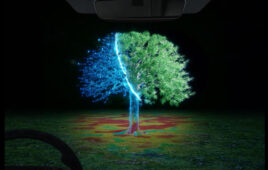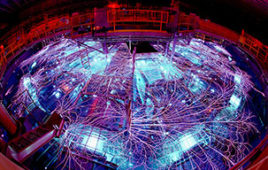 Researchers at the University of Wisconsin-Milwaukee (UWM) have found a new mechanism to transmit light through optical fibers. Their discovery marks the first practical application of a Nobel-Prize-winning phenomenon that was proposed in 1958.
Researchers at the University of Wisconsin-Milwaukee (UWM) have found a new mechanism to transmit light through optical fibers. Their discovery marks the first practical application of a Nobel-Prize-winning phenomenon that was proposed in 1958.
Assistant Professor Arash Mafi and doctoral student Salman Karbasi harnessed “Anderson localization” to create an optical fiber with a strong scattering mechanism that traps the beam of light as it traverses the fiber. The work was done in collaboration with Karl Koch, a scientist with Corning Inc.
Data transmission through conventional optical fibers—in which only one spatial channel of light traverses the fiber—is the backbone of the Internet. Such single-core fibers, however, are reaching the limits of their information-carrying capacity, says Mafi.
Propagation of multiple optical beams in a single strand of optical fiber is a sought-after solution to overcome this limitation. The collaboration’s novel discovery achieves this.
The work has potential in next-generation high-speed communication and biomedical imaging, but it also opens the door for more uses of “Anderson localization” in technology.
“Anderson localization” is named after physicist Philip W. Anderson, who first theoretically observed the curious containment of electrons in a highly disordered medium, an observation for which he shared the 1977 Nobel Prize in physics, but one that is still under investigation.
Mafi and Karbasi’s fiber design consists of two randomly distributed materials, which scatter the photons.
The fiber’s disordered interior causes a beam of light traveling through it to freeze laterally. The output light can follow any shift in the location of the entry point as it moves around on the cross-section of the fiber.
Karbasi says his theoretical calculations indicated that the proper fiber design would take advantage of Anderson localization. “We designed our fiber so that it provides more physical places where the light can propagate,” says Karbasi.
Their research, backed by a grant from the National Science Foundation, was published in Optics Letters.
The collaborators are currently working on forming and transmitting images using their unique method.




